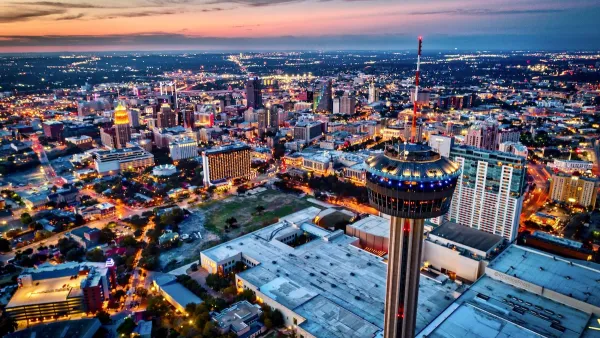Along with commute time reductions, expect significant rent increases resulting in some displacement of current residents around the three new Second Avenue Subway stations, according to a new report.
In addition to the exorbitant cost of Phase 1 of the Second Avenue Subway, it's important to recognize indirect costs to the neighborhood surrounding the three new stations, in addition to the benefits of reduced commute times resulting from the $4.5 billion investment for the nearly two-mile extension of the Q Line.
The opening of the long-awaited Second Avenue Subway on New Year's Day was "a transformative moment, promising to alter the future of a large slice of Manhattan," writes transit reporter Emma G. Fitzsimmons for The New York Times.
Phase 1 of the new subway is expected to bring relief to a portion of the Lexington Avenue line, "which currently serves more riders than the Chicago and Washington, D.C. subway systems combined," stated Metropolitan Transportation Authority (MTA) Chairman and CEO Thomas F. Prendergast. The new subway is expected to reduce congestion on the 4,5, and 6 lines by "as much as 13%, or 23,500 fewer riders on an average weekday," according to MTA.
The subway is "expected to be a boon to the local economy, making restaurants and stores suddenly easier to reach," adds Fitzsimmons.
But even as the city celebrates a line many doubted would ever open, its arrival has prompted fears that rising rents could force out longtime residents and shops — the kind of displacement that has swept through many other parts of an increasingly affluent New York and deepened its inequality.
People living near three new stations at 72nd, 86th and 96th Streets could face rent increases as high as $462 per month, according to a report by StreetEasy, a real estate website. Sleek high-rises are already popping up above the walk-up apartment buildings that have served as first homes for many New Yorkers.
The group released a related report last summer for The High Line which revealed a dramatic increase in resale prices in properties adjacent to Sections 1 and 2, what report author Mariela Quintana calls the line's 'Halo Effect.'
In her Nov. 9, 2016 report, "Changing Grid: Second Avenue Subway and Its Impact on Rental Costs," Quintana "assesses the subway's current status and that of the transportation-deprived rental market along First, Second and Third avenues and provides predictions on how the new line will impact future rent prices."
Fitzsimmons calls the Yorkville neighborhood of 78,000 residents "a rapid-transit desert, one of the few neighborhoods in Manhattan that the subway did not reach," after the Second Avenue and Third Avenue Els was razed, beginning in the 1940 but not replaced with the promised subway, thanks in part to Robert Moses who preferred to spend the funds on new expressways, but that's another story.]
It's not just residents who can't afford rent increases ranging from $330 to $462 per month depending on the station, but small businesses will be impacted as well.
“Displacement is a real concern,” said Thomas K. Wright, the president of the Regional Plan Association, an urban policy group. “When you increase the values in areas like this, you need to do things to protect affordable housing and retail.” He said officials should consider a host of policies to keep the neighborhood within reach, including securing affordable housing as part of any zoning changes.
Recently in Planetizen:
- Yes, the Second Avenue Subway Did Open as Scheduled on New Years Day, January 3, 2017
- Opening on January 1: The Most Expensive Subway Ever Built, December 29, 2016
FULL STORY: Second Avenue Subway’s Arrival Brings Fear That Rents Will Soar

Planetizen Federal Action Tracker
A weekly monitor of how Trump’s orders and actions are impacting planners and planning in America.

Chicago’s Ghost Rails
Just beneath the surface of the modern city lie the remnants of its expansive early 20th-century streetcar system.

San Antonio and Austin are Fusing Into one Massive Megaregion
The region spanning the two central Texas cities is growing fast, posing challenges for local infrastructure and water supplies.

Since Zion's Shuttles Went Electric “The Smog is Gone”
Visitors to Zion National Park can enjoy the canyon via the nation’s first fully electric park shuttle system.

Trump Distributing DOT Safety Funds at 1/10 Rate of Biden
Funds for Safe Streets and other transportation safety and equity programs are being held up by administrative reviews and conflicts with the Trump administration’s priorities.

German Cities Subsidize Taxis for Women Amid Wave of Violence
Free or low-cost taxi rides can help women navigate cities more safely, but critics say the programs don't address the root causes of violence against women.
Urban Design for Planners 1: Software Tools
This six-course series explores essential urban design concepts using open source software and equips planners with the tools they need to participate fully in the urban design process.
Planning for Universal Design
Learn the tools for implementing Universal Design in planning regulations.
planning NEXT
Appalachian Highlands Housing Partners
Mpact (founded as Rail~Volution)
City of Camden Redevelopment Agency
City of Astoria
City of Portland
City of Laramie


























